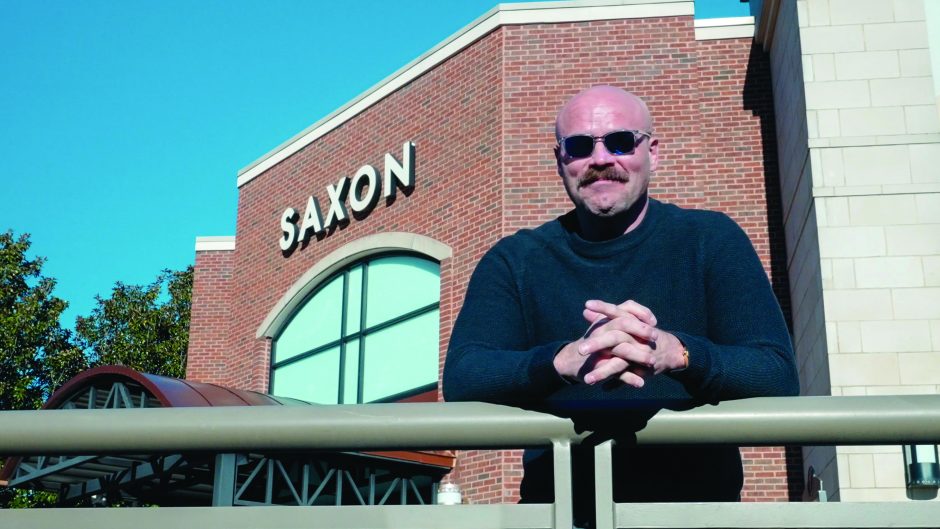
If you took a glance at Garrett Breton’s LinkedIn profile, you might assume that he was destined to be president and owner of Comfort One Shoes, now a 15-store chain following last fall’s acquisition of Saxon Shoes, a 70-year-old Richmond, VA, institution. Breton joined the Mid-Atlantic-centered company in 1994, as a 14-year-old stock boy, helping his father, Maurice, get the then single, 850-square-foot store off the ground. He steadily climbed the ladder to sales associate, assistant manager, manager, buyer, director of merchandising, VP of sales, VP of merchandising, and, finally, president and owner in January 2020. He honed his retailing skills at each stop. He was successful and enjoyed it, most of the time. Along the way, Comfort One Shoes expanded and built a reputation as the standard-bearer of topnotch customer service with a merchandise mix that broke barriers on what consumers would spend for casual footwear. So one might assume that when Breton took the mantle, he would be fulfilling his lifelong dream.
Well, not exactly. It wasn’t until about 15 years into his tenure at Comfort One Shoes that Breton even entertained the idea of making this a career, let alone buying the family business one day. Until that point Breton, an entrepreneur at heart with various successful side gigs, just didn’t feel like Comfort One Shoes was “his thing,” or would ever be. “It felt like it was my dad’s company that I just worked at,” he says. “I was sucked up into it, managing stores and then buying, but it never felt like this was my dream.”
That all changed when Breton began participating in NSRA’s NextGen Leadership Program, around age 30. “That’s when the thinking went from a job to how do we go from we to me?” he says. “How do we run the business together, and then how would he eventually exit and [let] me take over fully? What would that look like?”
Those NextGen meetings were where Breton found his personal Star Trek convention, so to speak. There were people around his age who had spent their lives working in their family shoe businesses. They had similar backgrounds, skills, concerns, dreams, pangs, and indecision. There was plenty of family drama to go around. Most of all, though, the meetings were solution-oriented with the goal of successfully passing these operations on to the next generation in a way that would be best for the family and the business. “All those difficult conversations that NextGen brought up made it something that I started working towards, as opposed to an outside opportunity that maybe would happen someday but didn’t feel real,” Breton recalls. “I was able to say here’s what I would love. Here’s how I would do things differently. Here are the skills I need to learn. Here’s a community that I can bounce questions off of. It made it all much less isolating.”
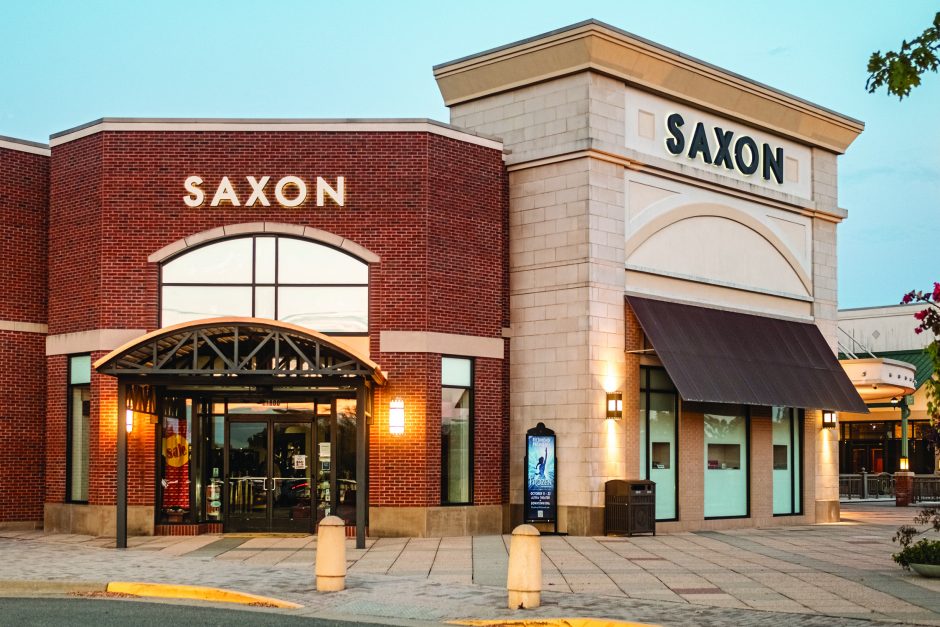
shoe store shopping destination in Richmond’s Short Pump Town Center.
The fact is when your father owns the company, it’s difficult to confide in coworkers. “They don’t want to hear it, basically,” Breton says, noting that this was a stretch when work wasn’t that much fun. “But once I was able to build a community—with the Habre, Luck, Sajdak, and Beck families—it became, ‘Oh, I can figure out how to do this forever in ways that I’m very energized by.’”
After about a year of negotiations, the Bretons entered into a 10-year gradual transfer of ownership deal, which was finalized in January 2020. Perfect timing—not! “I walked right into Covid, which was into the fire,” he says. “While it was the most stressful period of my life, I got a fire hose of learning that I think changed me as a leader and really solidified the company.”
Long pandemic story short: Comfort One Shoes laid off 95 percent of its workforce while Breton went into survival mode. He met with banks, vendors, and landlords trying to manage the cash flow that was going out while a trickle was coming in through its online channel. Meanwhile, Shawn O’Neill, vice president and a 27-year veteran of the company, updated employees on when they might get back to work. Stores were closed from two to six months. Breton is proud to report that 100 of the 102 employees were rehired. (One retired and the other moved to another state.) It took 18 months to get back to 2019 numbers. “It was many, many, many sleepless nights and the highest stress I’ve ever faced,” Breton recalls, noting that his father was very helpful, but it was his problem to fix. “And it wasn’t like my father, or anyone else, had a playbook to follow for an 87 percent drop in sales in one day.”
Flash forward and Breton reports Comfort One Shoes is registering its best year to date (“by a lot”) on the heels of 2023, which was the best in its history. In addition to consumers’ desire to shop in stores again and Comfort One Shoes being premier destinations for service and selection, he attributes the amazing rebound to the increased trust that’s made a great team even better. “The level of trust between the salesfloor and management soared,” he says. “Our weekly Teams meetings were fully transparent: Here’s where we need to get to, and everyone pulled together on achieving that.” Credit, Breton adds, goes to his dad, who built a competent and strong workforce that had been together for years. “My dad attracted people who want accountability and want to be the best. Going through Covid made our team super-charged.”
Garrett Goes Big
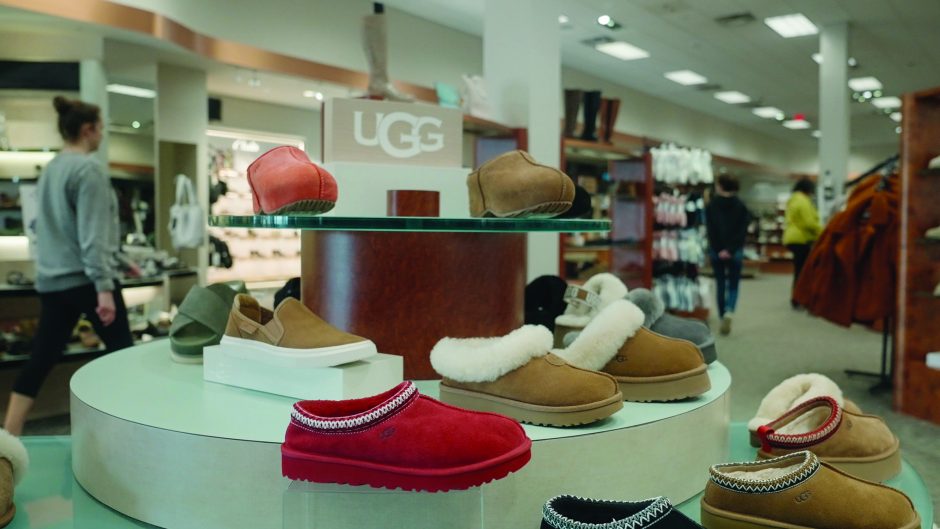
Breton is a go big or go home exec. He’s a big picture guy with wildly aggressive growth plans. In fact, he himself called the chain’s target, set in 2021, of 33 percent annualized growth as “optimistically delusional,” but that’s how he rolls. “We’ve hit it both years,” he reports, citing a combination of maximizing store sales, investing in technology, growing its online channel (sales doubled in 2021 and 2022), and expanding the store base through acquisitions. He sees the latter as the best way to meet that growth pace.
Breton first stuck his toe in those waters in June 2022, acquiring Montague and Son Birkenstock in Herdon, VA. It had been in business for more than 30 years. It met the basic criteria: nearby and a similar footprint. Out of the gate, Breton went conservative, forecasting 10 percent growth. Sales grew 43 percent. “We were able to add athletic as a category, which has been the hottest trend in the country,” he says. “And we turned the open stock format into a full-service store. We also had higher margins, so the profits are even higher as a percentage. It’s all worked really well.” Breton adds. “It was a safer acquisition to get the kinks out, which thank God we did, because Saxon’s is a much bigger project.”
At 21,000 square feet, Saxon Shoes is indeed much bigger. It’s about double the largest Comfort One Shoes location. It also includes an extensive children’s department—another first for the chain. The brand selection is roughly double what they normally carry, not to mention consists of a much broader price spectrum. It’s a different animal entirely.
None of that has deterred Breton. He is thinking big, and he is confident that Saxon has the potential to grow nicely. “Richmond is the fastest growing market in Virginia, and we would have opened a store for sure, or two or three, if Saxon’s hadn’t been there,” he says, noting that the store is roughly an hour and a half from Comfort One Shoes’ distribution center. “It has enough volume that it can be a hub for our next set of acquisitions and growth. It gives us access to products that we’ve never tested, and they have a much bigger sizes-and-widths business, so there are a lot of opportunities to learn and tap into.” Breton believes the Richmond market will respond well to Comfort One Shoes’ unique products and high level of service, adding that Saxon is already working well from a volume and sales point. It helps, he adds, that the Saxon team is great. “They’re just really nice people, and they want to learn,” he says. “Some have been there for 50 years. One of their children’s salespeople knows every single customer who walks into their doors going back decades. She’s a part of that community.”
That connection looks to remain strong, as Comfort One Shoes retained every Saxon employee (and hired seven more), including Amanda Weiner, who represents the third generation of the original family ownership. She’s the children’s buyer and marketing outreach person for the community. “Customers are happy the employees are still there,” Breton says. “They’re passionate about the store. They grew up shopping there. Their grandmothers and kids shopped there.”
Breton’s mission is to make Saxon’s connection and shopping experience even stronger. That spans free lollipops in the kids’ department to cigar rolling and Scotch nights for the guys and ladies’ nights with Champagne and local wines. “We’re going to flood that store with exciting experiences, so they’ll have a good time and will want to come back,” he says. “We want Saxon Shoes to be a community hub that embraces the nostalgic feel of a family shoe store.”
Former Saxon Shoes President Gary Weiner believes his family business is in very good hands. “After doing our homework, it just felt like Garrett, Shawn, and Comfort One Shoes has their A game on,” he says. “Their underlining philosophy of really taking good care of the people who work with them, the ones who take them to the dance, as well as taking good care of customers is in line with ours. And their organizational structure is solid—the way they manage vendors, work with product, training, etc. It’s like Saxon Shoes on steroids.”
Who’s Next?
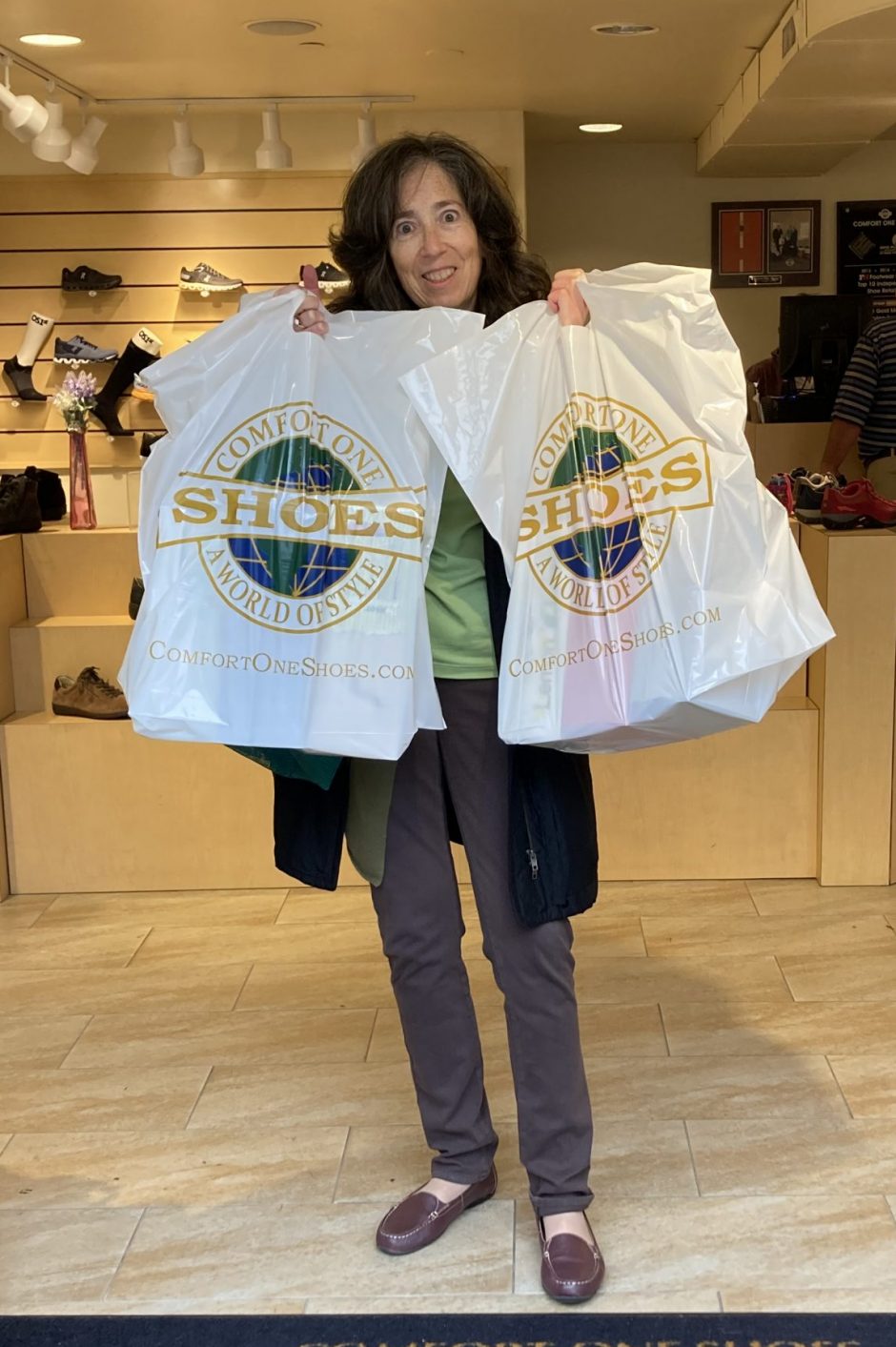
In keeping with Breton’s aggressive growth strategy, he envisions operating 23 locations in three years. He has a detailed set of criteria and a spreadsheet listing potential acquisitions. “I see no problem finding deals over the next several years,” he says. That aside, it’s a targeted search. “I want to go where the government is friendly to retailers, and that means from tax and regulation perspectives,” he offers. “I also want to go where there’s a 10- to 20-year growth trend in that market. So most of our focus is on the Southeast.”
Why not open stores from scratch? Breton is a firm believer, for now, that acquisitions present a clearer path for growth. For starters, the pickings are there. “There are a lot of people who are looking to retire, and they have good stores,” he says. “Plus, most of the businesses that we’re looking at have a lower rent structure and sales costs than we do, so if we can bring in our operational expertise and higher margin products, we can make more money in the same location, which allows us to pay a fair price for their business and sill have upsides for us.” Another benefit: knowing the volume and rent figures. It takes out a lot of guesswork.
As for potential drawbacks, Breton cites a few—like employees being on board with the new owners. “Employees can be set in their ways, and you have to overcome that,” he explains. “You have to figure out what’s important to each person and see what they’re doing and why they’re doing it that way, and then see if your system is better. It involves much more collaboration and is more time consuming than starting a team from scratch.” But, he adds, you can’t throw the baby out with the bath water. It’s why, for example, Breton is keeping the kids’ department in Saxon. “Even though it’s a difficult business to manage and it has low margins, taking it out would be disastrous for that business,” he says, noting that people drive for hours just to shop that department. “It’s one of the busiest departments, and many of the moms end up shopping the other departments. It makes sense. We just have to learn how to embrace that. Our aim is to make evolutionary changes to make a business even better.”
The same learning curve applies to servicing Saxon’s broader audience. “You have to help customers more quickly as opposed to Comfort One Shoes, where we’ll spend over an hour with them,” Breton offers. “There’s lots of interaction that can expand the sales opportunity, whereas in Saxon’s it’s let me run and grab that as quick as I can for you. So we’re learning how to meld our two approaches.”
Breton is projecting a modest increase for Saxon in 2024. Some new and private label brands as well as returning brands—On being notable—should help. “We’re also going to do a lot more digital marketing than they did previously, which should bring in more customers.” Above all, it’s a work in progress. “We’re learning every day, and we’re a stronger and more diverse company as a result,” he says.
Living the Dream
Breton is one happy camper now. Those early doubts as to whether Comfort One Shoes was the right career are well behind him. “The business has become something I want as opposed to just happening,” he says. “I’m really enjoying it now. As long as I’m learning new things that are challenging and fun, then I’m excited and I want to stay.”
Breton has become a proud protector of his family’s retail legacy, which he now considers to be his biggest responsibility. “I’m very proud my dad trusted me with Comfort One Shoes to grow and protect,” he says. “Things are really clicking, and having been through cycles when they weren’t, I’m enjoying this run a lot. It’s an exciting place—the team is fired up.”
The drive to evolve and succeed in spite of the risks is what fuels Breton. “Doing little increases each year doesn’t motivate me,” he says. “I need to feel that I’m making progress, and that involves overcoming difficulties.”
That statement brings Breton back to the many sleepless nights during Covid and why he fought so hard to stay in business: It was about his employees. “I’ve worked with many of them for 20 years, and I’m excited when they grow professionally and when their kids get into good colleges,” he says. “I can’t get that feeling anywhere else.” And in order to retain good employees, he can’t stand pat. “If we stay the same, there’s no chance for that great assistant manager to become manager of a new store, or for someone to get involved in designing for our private label business or to get into digital marketing. We have to keep evolving and make our business grow.”
Sounding Off
The way Garrett Breton sees it.
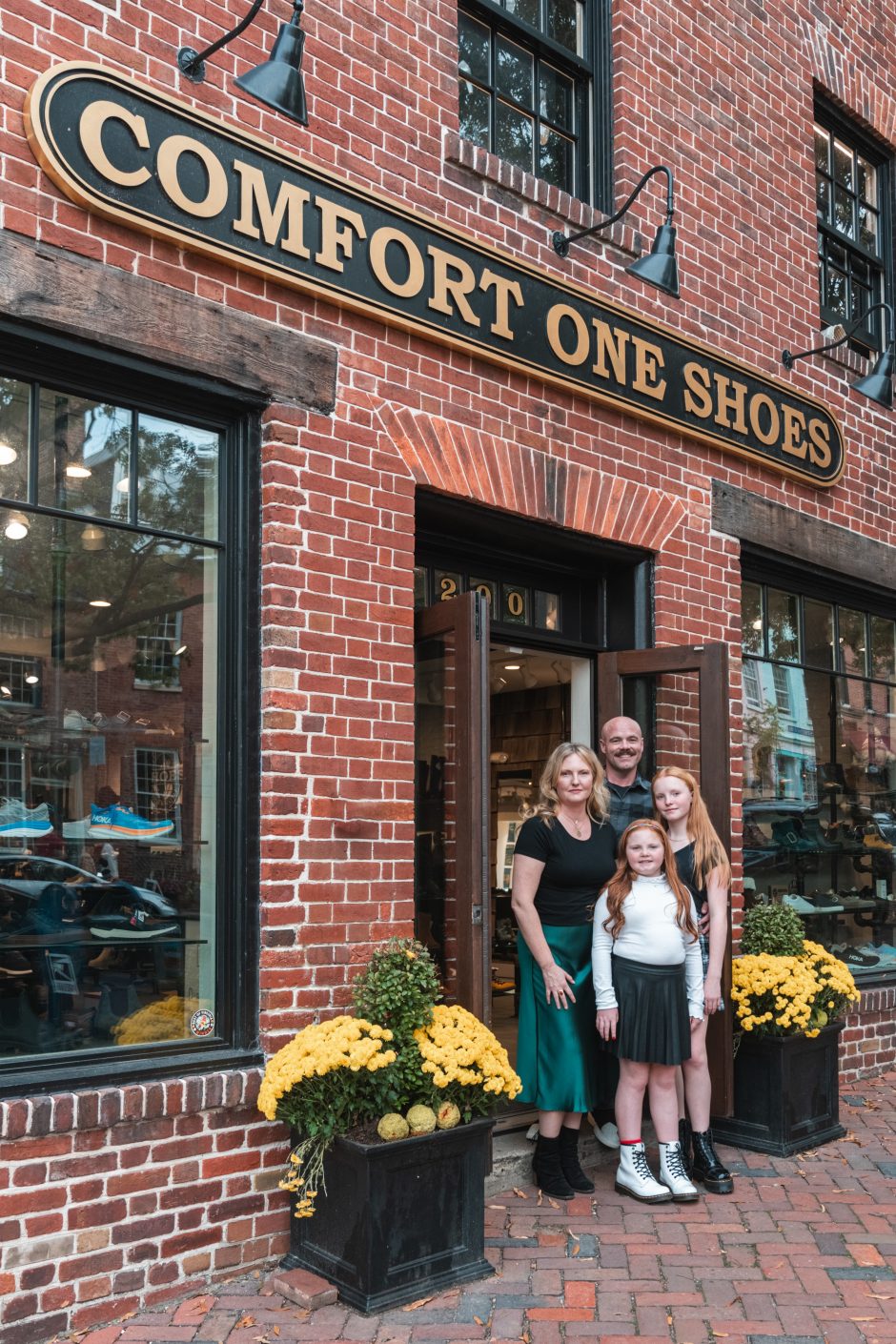
Garrett Breton and family.
Private Label: There used to be a geographical fence around D.C. where we’d have exclusives. That’s over. Now brand sites offer styles in every color including 10 that they won’t offer to us. Plus, a lot of vendors are opening stores. So the lines have blurred, and we can go to European factories and make great shoes with better margins. If we do our job well, customers will want a second pair, and if they Google that brand, it’ll only brings them to us. There are absolute advantages to doing this, which vendors understand. Similarly, I expect vendors to do what’s best for them. That aside, there is tons more where our interests overlap.
Designing: I’m not reinventing the wheel. I take a known style and maybe make it better—a more padded espadrille. We’ve also upgraded our marketing story and use better boxes—aspects that add value beyond the shoes. It’s another new project that gets me excited. The sacrifice is a lot of travel to Portugal, Spain, Italy, Turkey, and Brazil. But building something exceptional takes time and effort.
DTC: Strong brands can attract consumers to their sites, but that’s only a few. It’s cheaper to acquire customers by selling through a retailer than it is to find them online. But it’s also easy to steal them when it comes to buying the repeat purchases. That’s what we’ve lost over the last decade. So we must do a better job at making it fun to come into our stores and introduce them to items that they don’t know yet. We back that up with a guarantee that if they don’t love their shoes, we’ll give their money back or a different pair. We make that guarantee because we do such a good job selecting the right style and fit them properly.
Customer Service: I hear a lot of people talk about it, but I don’t see it much. Grabbing a shoe out of the back room isn’t service to me. The boomer generation, in particular, wants an experience where they’re treated nicely by people who know what they’re doing and can actually save them time, as opposed to someone who is paid to change the clearance sign in the window. We have exceptional people. The average floor tenure is eight years. Customers can make real connections. They are trusted sources of information. It creates tremendous loyalty.
Culture: We trust and work for each other. I love our camaraderie. We’re also a bit silly. At our annual awards brunch, for example, I wear a crazy outfit and we all have a good time. We’re not stodgy. We’re growing and evolving, and that’s exciting. It’s a fun place to work.
Leadership: Some retailers are great at merchandising, others at marketing or numbers. Through self-reflection, I’ve identified my weaknesses and have brought in or delegated people to do what I’m bad at so we can fire on all cylinders. The key is to not make the whole company like the leader. Hiring people who are like you with similar skills because you enjoy hanging out together is wrong!
Typical Day: Recently, I was at Saxon’s where I first met with the manager, who’s been there for 30 years. She informed me about some merchandise and marketing needs. We also talked about integrating new hires into the team. We then discussed the marketing calendar, and she gave me contacts for the newspaper, TV, and radio outlets so we don’t miss the clearance sales timing. Then I met with our executive VP (Shawn O’Neill), and we got on the same page on several matters, like our three-day, off-site training session for our managers coming up. Then we met with some digital salespeople about updates to our site. Then it was off to my daughter’s holiday pageant.
Dream Job: I’m in a cool spot where I can focus on what I want, because I have great people making sure the trains all run on time. The favorite part of my job is exploring new opportunities, followed closely by doing that with people I love working with. You could say I’m in charge of culture and growth. Cultural being rewarding employees for doing awesome stuff via thank you notes, cigars, promotions, etc. That’s the fun part. The challenging, but exciting part, is looking for new opportunities so we can continue to evolve and grow.
Retirement: I wouldn’t know what I’d do. (Laughs). Besides, I’m having too much fun.



